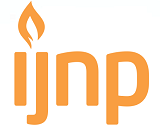The Application of Levine’s and Kolcaba’s Theories in the Nursing Care of Patients with the Third Stadium of Cervical Cancer
DOI:
https://doi.org/10.18196/ijnp.3296Keywords:
Cervical cancer, Kolcaba’s comfort, Levine’s conservation, Nursing careAbstract
Background: Cervical cancer was the second leading cause of cancer in Indonesia. New cases of cervical cancer are found in Indonesia each year.
Objective: This study aims to describe an application of Levine’s Conservation Nursing Theory and Kolcaba’s Comfort Theory in a patient with the third stadium of cervical cancer.
Method: The method used in this study was a narrative of a case report in one patient with the third stadium of cervical cancer at the hospital in Central Jakarta. She is 44 years old, who has been diagnosed since October 2017. She experienced nausea and vomiting a week before she was hospitalized and had a history of vaginal discharge ever since nine months ago. Levine’s conservation interventions were provided to maintain energy, improve adaptability, improve standard comfort, educate, and provide comfort.
Results: The result showed that the patient was able to adapt to the condition of the illness and obtained a sense of comfort during hospitalization. Therefore, Levin's conservation theory and Kolcaba's comfort theory can be applied in performing nursing care in patients with cervical cancer.
Conclusion: The three stages of Kolkaba's comfort intervention can improve patient comfort not only physically but also psychologically during treatment.
References
Afiyati, Y & Pratiwi, A. (2017). Seksualitas dan kesehatan reproduksi perempuan: Promosi, permasalahan dan penanganannya dalam pelayanan kesehatan dan keperawatan. Edisi 1.Cetakan 2. Jakarta: Rajawali Press.
Alligood, M.R., (2014). Nursing theory: Utilization & application. 4th edition. Philadelphia: Mosby
Bal, M.S., Goyal, R., Suri, A.K., & Mohi, M.K. (2012). Detection of abnormal cervical cytology in Papanicolaou smears. J Cytol, 29 (1), 45-47.
Diananda, R. (2007). Mengenal Seluk Beluk Kanker. Yogyakarta: Katahati
Dinarti & Yuli Mulyanti. (2017). Dokumentasi Keperawatan. Jakarta: BPPSDMK Ministry of Health of the Republic of Indonesia. Retrieved from
http://bppsdmk.kemkes.go.id/pusdiksdmk/ wp-content/uploads/2017/11/PRAKTIKADOKUMEN-KEPERAWATAN-DAFIS.pd
ECOG-ACRIN. (2018). ECOG Performance Status. Retrieved from https://ecog-acrin.org/resources/ecog-performance-status
Fitriani, H., Setyowati & Afiyanti, Y. (2016). Kegiatan Residensi Spesialis Keperawatan maternitas Fokus Penerapan” Need for Help Wiedenbach” dan “Conservation Levine” pada Asuhan Keperawatan pada Pasien Perdarahan karena Kanker Serviks. Jurnal Skolastik Keperawatan, 2 (1), 59-69
Herlana, F., Nur, I. M., & Purbaningsih, W. (2017). Karakteristik Pasien Kanker Serviks berdasar atas Usia, Paritas, dan Gambaran Histopatologi di RSUD Al-Ihsan Bandung. In Bandung Meeting on Global Medicine & Health (BaMGMH). 1(1), 138-142.
Hidayat, E., Sari, D. H., & Fitriyati, Y. (2014). Hubungan Kejadian Kanker Serviks Dengan Jumlah Paritas Di RSUD Dr. Moewardi Tahun 2013. Jurnal Kedokteran dan Kesehatan Indonesia, 6(3), 128-136.
International agency for cancer research. (2014). Cancer prevention. Swiss: WHO Press
Ministry of Health of Republic Indonesia. (2015). Infodatin: Pusat data dan informasi kementerian Kesehatan RI tentang informasi penyakit kanker. Jakarta: Kemenkes Republik Indonesia
National Committee of Cancer Management. (2014). Panduan Penatalaksanaan Kanker Serviks. Retrieved from kanker.kemkes.go.id/guidelines/PPKServiks.pdf
Sari & Sahrul. (2014). Faktor yang berhubungan dengan tindakan vaksinasi HPV pada wanita usia dewasa. Jurnal Berkala Epidemiologi, 2(3), 321-330.
Tomey & Alligood. (2006). Nursing theorist and their work. 6th Edition. St. Louis: Mosby Elsevier, Inc
Wuriningsih, A.Y. (2016). Potret asuhan keperawatan maternitas pada klien dengan kanker serviks melalui pendekatan konservasi dan efikasi diri. Nurscope, Jurnal Keperawatan dan Pemikiran Ilmiah, 2(6), 1-11.
Yolanda, A.E., & Karwur, F.F. (2013). Tingkat Kecemasan Pasien Kanker Serviks pada Golongan Ekonomi Rendah yang Mengikuti Program Kemoterapi di RSUD Dr. Moewardi. Sains Medika, 5 (2), 68-81.
Downloads
Published
Issue
Section
License
License
Articles published in the IJNP (Indonesian Journal of Nursing Practices) are licensed under a Attribution 4.0 International (CC BY 4.0) license. You are free to:
- Share — copy and redistribute the material in any medium or format.
- Adapt — remix, transform, and build upon the material for any purpose, even commercially.
This license is acceptable for Free Cultural Works. The licensor cannot revoke these freedoms as long as you follow the license terms. Under the following terms:
Attribution — You must give appropriate credit, provide a link to the license, and indicate if changes were made. You may do so in any reasonable manner, but not in any way that suggests the licensor endorses you or your use.
- No additional restrictions — You may not apply legal terms or technological measures that legally restrict others from doing anything the license permits.
Copyright
Authors who publish with IJNP (Indonesian Journal of Nursing Practices) agree to the following terms:
- Authors retain copyright and grant IJNP (Indonesian Journal of Nursing Practices) the right of first publication with the work simultaneously licensed under an Attribution 4.0 International (CC BY 4.0) that allows others to remix, adapt and build upon the work with an acknowledgment of the work's authorship and of the initial publication in IJNP (Indonesian Journal of Nursing Practices).
- Authors are permitted to copy and redistribute the journal's published version of the work (e.g., post it to an institutional repository or publish it in a book), with an acknowledgment of its initial publication in IJNP (Indonesian Journal of Nursing Practices).














